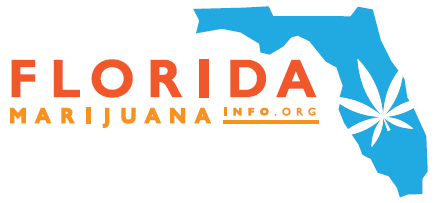Medical Cannabis
One of the outcomes of the war on drugs is that countless patients have been prohibited from using medical cannabis to treat their conditions, relieve pain or find relief from nausea and other side effects of treatment.
While marijuana remains illegal under federal law, a majority of states, including Florida, New York, Wisconsin, Tennessee, California and Hawaii have either already legalized medical marijuana, or have pending legislation or ballot initiatives to do so. Public support for legalizing cannabis in the United States is quickly mounting.
What is Cannabis?
The biological name of marijuana is Cannabis Sativa, so the plant is often referred to as Cannabis. Cannabis contains tetrahydrocannabinol, or THC, which is a potent chemical that results in the euphoria, or “high” reported by users of marijuana.
Medical Uses of Cannabis
The THC in cannabis can be used for a variety of medical applications. THC treats or prevents the nausea and vomiting many patients experience in response to chemotherapy and other cancer-fighting medications. Cannabis can also help increase appetite, which is therapeutic for people with AIDS, cancer, dementia or anorexia.
Additional medical uses of cannabis include:
-
To relieve intraocular pressure for glaucoma patients.
-
To alleviate anxiety.
-
As an alternative to synthetic painkillers and opiates to treat pain.
-
To reduce seizures in people with neurological and seizure disorders.
-
To relieve neuropathic (nerve damage) pain.
-
To treat convulsions in epilepsy patients.
Many of these clinical applications are not effectively addressed by other medications.
In addition, researchers are reporting promising results in treating autoimmune and neurological disorders, including multiple sclerosis, rheumatoid arthritis and amyotrophic lateral sclerosis (Lou Gehrig’s disease).1 While there are likely hundreds of applications for medical cannabis, continued research has been hindered in the U.S. by its federal status as a Schedule 1 controlled substance. The lack of research has made it more difficult for proponents of legalizing medical marijuana to gather needed support.
How is Medical Cannabis Used?
Users of medical cannabis may ingest it in any of the following ways:
-
Smoking marijuana – the dried flower buds and leaves of the cannabis plant.
-
Smoking Cannabis or hashish oils – made from resin that is extracted from the flowers and leaves of the cannabis plant.
-
Using a vaporizer – vaporizers heat and vaporize cannabis without burning it.
-
Edibles: Cannabis in herbal or extract from is added to a variety of foods, from cake and brownies, to lollipops and chocolate truffles.
-
Marinol – an FDA-approved medicine, which comes in capsules and contains synthetic THC.
Problems with Marinol
One of Marinol’s main drawbacks is that it provides limited relief to patients. Because it is not well absorbed, only 10 – 20% of each dose is available for the body to use. Also, different patients absorb it at different rates, while others don’t respond at all to synthetic THC. So while some patients report good results, others see little benefit from using Marinol. Patients suffering with vomiting may also have difficulty swallowing Marinol or keeping the capsules down.
In addition, Marinol lacks many of the chemical compounds, or cannabinoids, found in natural cannabis. THC is one, but others shown to have therapeutic applications include terpenoids (oils) and flavonoids (phenols). One of these is cannabidol or CBD, which has demonstrated analgesic, antipsychotic and anti-rheumatoid arthritic properties.
Is Medical Cannabis Safe?
The cannabinoids found in medical cannabis have a solid safety record. Consuming cannabis in any quantity cannot result in a fatal overdose, and there are no recorded cases of overdose fatalities attributed to cannabis.
However, everyone reacts differently to medications. Certain populations are susceptible to increased risk of adverse side effects. These include pregnant women, people with a family history of mental illness, nursing mothers, adolescents, and those with a history of limited lung function, heart disease or stroke. All patients should consult their physician before deciding to use medical cannabis or any other medication.
Does Smoking Medical Cannabis Cause Cancer?
Burning cannabis, such as when smoking marijuana, causes its chemical compounds to produce byproducts. Many of these are thought to be carcinogens. However, studies as to whether marijuana smoke causes lung cancer remain inconclusive.
A 2006 UCLA study found that chronic marijuana smokers who did not smoke cigarettes were not at an increased risk of lung cancer. In addition, a 2012 study published in the Journal of the American Medical Association found that inhaling marijuana does not impair lung function, and that lung function actually improved in subjects who smoked marijuana at low to moderate rates.
Legalizing Medical Cannabis in Florida
Legalizing medical cannabis in Florida would protect the industry and patients from federal interference, allow state and local governments to regulate it, and give patients safe access to quality medicine.
Do you agree or disagree that medical cannabis should be legal in Florida? Leave your comment below.
Sources:
1 NORML.org, Marinol vs. Natural Cannabis
2Science Daily, 05.26.2006
3Time, 01.10.2012












 OMD Agency
OMD Agency
Recent Comments